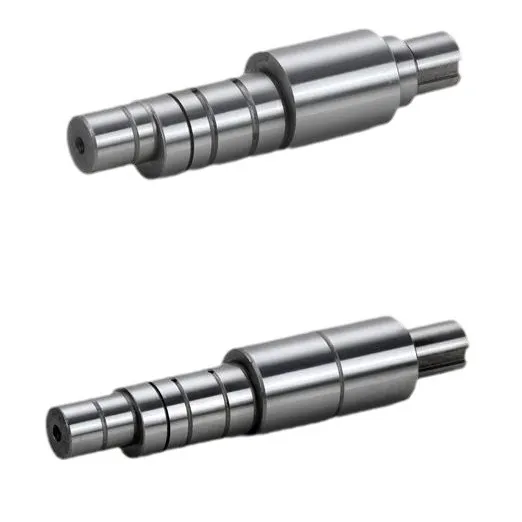Drive Shaft Assembly: Essential Components for Smooth Vehicle Performance
2024-08-29
The drive shaft assembly is a fundamental component in many vehicles, playing a crucial role in transferring power from the engine to the wheels. Understanding its function and maintenance is essential for ensuring smooth and reliable vehicle operation. In this blog, we’ll explore what a drive shaft assembly is, its components, its significance, and tips for maintenance to keep your vehicle running smoothly.
What is a Drive Shaft Assembly?
A drive shaft assembly is a mechanical component that transmits power from the engine or transmission to the wheels of a vehicle. It connects the powertrain (engine and transmission) to the differential, which in turn drives the wheels. The drive shaft plays a critical role in converting the rotational power generated by the engine into the motion that propels the vehicle forward.
Key Components of a Drive Shaft Assembly
1. Drive Shaft: The main component, often made of steel, aluminum, or carbon fiber, is a long, cylindrical rod that transmits torque from the transmission to the differential.
2. Universal Joints (U-Joints): These joints allow the drive shaft to flex and accommodate the movement of the vehicle’s suspension. They are essential for maintaining a smooth power transfer between the transmission and differential.
3. Center Support Bearing: This bearing supports the drive shaft and reduces vibrations. It is typically mounted to the vehicle’s chassis and helps maintain alignment.
4. Slip Yoke: This component allows for axial movement of the drive shaft, accommodating changes in the distance between the transmission and differential due to suspension movement.
5. Differential: The differential distributes power to the wheels and allows them to rotate at different speeds, especially during turns. It is connected to the drive shaft at one end and the wheel axles at the other.
6. Flange or Yoke: These are the connection points where the drive shaft attaches to the differential and transmission. They ensure a secure and stable connection.
Importance of the Drive Shaft Assembly
1. Power Transmission: The drive shaft assembly is essential for transmitting power from the engine to the wheels. Without it, the vehicle would not be able to move.
2. Smooth Operation: Properly functioning drive shaft assemblies ensure smooth and consistent power delivery, resulting in a smoother ride and better handling.
3. Vibration Reduction: The assembly helps reduce vibrations and noise by utilizing components such as universal joints and support bearings, contributing to a more comfortable driving experience.
4. Vehicle Performance: A well-maintained drive shaft assembly enhances overall vehicle performance, including acceleration, stability, and cornering.
5. Safety: A faulty drive shaft assembly can lead to dangerous driving conditions, including loss of power, excessive vibrations, and even damage to other vehicle components. Regular maintenance is crucial for ensuring safety.
Signs of Drive Shaft Issues
1. Vibration: Excessive vibrations or shaking felt through the vehicle’s floor or steering wheel may indicate a problem with the drive shaft or its components.
2. Clunking Noises: Unusual clunking or banging noises when accelerating or decelerating can be a sign of worn or damaged universal joints.
3. Difficulty Steering: Difficulty steering or a feeling of looseness in the steering wheel may suggest issues with the drive shaft or related components.
4. Grease Leaks: Visible grease or oil leaks around the drive shaft or its connections may indicate a seal or joint problem.
5. Squeaking or Grinding: Squeaking or grinding noises coming from the drive shaft area may signal worn bearings or joints.
Maintenance Tips for Drive Shaft Assemblies
1. Regular Inspections: Periodically inspect the drive shaft assembly for signs of wear, damage, or leaks. Check the universal joints, center support bearing, and other components for any issues.
2. Lubrication: Ensure that the universal joints and other moving parts are properly lubricated. Regularly apply grease to the grease fittings as recommended by the vehicle manufacturer.
3. Alignment Checks: Ensure that the drive shaft is properly aligned and balanced. Misalignment can lead to excessive wear and vibration.
4. Replace Worn Components: If you notice any signs of wear or damage, such as excessive play in the universal joints or a damaged center support bearing, replace the affected components promptly.
5. Professional Service: For complex issues or if you’re unsure about performing maintenance yourself, seek professional assistance from a qualified mechanic. They can perform a thorough inspection and address any problems with the drive shaft assembly.
6. Follow Manufacturer’s Recommendations: Adhere to the maintenance schedule and recommendations provided by the vehicle manufacturer. This ensures that you address any potential issues before they become serious problems.
Applications of Drive Shaft Assemblies
1. Passenger Vehicles: In cars and SUVs, drive shaft assemblies are used to transfer power from the engine to the wheels, ensuring smooth and efficient driving.
2. Trucks and Heavy-Duty Vehicles: Drive shafts in trucks and commercial vehicles handle higher torque and heavier loads, requiring robust and durable assemblies.
3. Off-Road Vehicles: In off-road vehicles, drive shafts are designed to withstand extreme conditions and rough terrain, providing reliable power transfer and durability.
4. Performance Vehicles: High-performance and racing vehicles use specialized drive shaft assemblies to handle increased power and speed demands.
5. Industrial Machinery: Drive shafts are also used in various industrial applications, such as conveyor systems and machinery, to transfer power and motion.
Conclusion
The drive shaft assembly is a vital component in modern vehicles, responsible for transmitting power from the engine to the wheels and ensuring smooth, reliable performance. Understanding its components and maintenance needs can help you keep your vehicle running efficiently and safely. Regular inspections, proper lubrication, and timely repairs are essential for maintaining a healthy drive shaft assembly and avoiding potential issues. Whether you’re driving a passenger car, heavy-duty truck, or off-road vehicle, the drive shaft assembly plays a crucial role in your vehicle’s overall performance and reliability.



